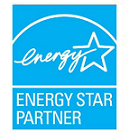


|
Hydropath Operational Guidelines |
Hydropath Operational GuidelinesScale PreventionHydropath prevents the formation of hard scale due to increases of temperature and pressure change, under all normal operating conditions. Users are advised to contact ECMI Technical Support if they suspect that conditions are unusual. Scale RemovalOld scale is normally broken down. The time taken depends on the
volume of water, the flow of water to remove the excess scale
crystals, the porosity of the old scale and variations in the
temperature and the pressure of the water. In most cases the process
is fairly rapid, and up to 95% or more of old scale is broken down
and treated within the first three months. CorrosionThe application of Hydropath cannot itself cause corrosion or leaks. Scale is a direct cause of corrosion and its removal may reveal leaks. Rust coatings in mild steel pipe-work are altered, resulting in a hard black surface deposit, magnetite, rather than normal rust and further corrosion is prevented. This effect is due to an interference with the electro-chemical reaction needed for corrosion to take effect. MaintenanceHydropath uses solid state circuitry and does not require maintenance. Its signal cannot create films which would reduce performance. There is a red light which is powered directly by the generated signal and is a positive indication of correct operation. If the operation of the device is critical, users should monitor this light as part of a planned maintenance procedure. On the commercial units, the BMS port can be tied into the system to trigger an alert. Residual EffectOnce water has left the plumbing system or left the protection zone, it can no longer be subjected to the Hydropath conditioning field. 30 minutes may be taken as a conservative guide to the time that the water retains its full scale prevention ability. Soft ScaleIn systems with no turbulence the crystals can settle. This can occur in commercial kettles, coffee machine reservoirs, large calorifiers and cooling tower pools. The resulting soft scale is removed during maintenance or using filters. Recirculation Systems with EvaporationWhere a recirculation system involves evaporation, e.g. cooling towers or humidifiers, the suspended crystals must be removed using filtration (<50 microns) or blow down to avoid concentration. On initial application existing scale will be broken down leading to an excess of precipitate which users must address. The easiest approach is to increase blow down. A suitable filter with automatic back wash will also control the problem and will reduce water costs. pH can be controlled using sulphuric acid to reduce the rate of precipitation. Plate Heat ExchangersWhen using Hydropath to protect plate heat exchangers, existing scale in the pipes upstream of the device will be broken down and may come off in large particles. This will lead to excess precipitate in the heat exchangers which can continue to cause scale for the first few weeks. If the plate heat exchanger is heated using steam, it is advised that the hot steam supply is connected to the same side as the water return. The heat exchanger will give increased performance through the avoidance of boiling. |
Copyright © 2003-2009 ECMI